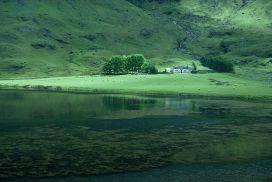Differences
This shows you the differences between two versions of the page.
| Both sides previous revisionPrevious revision | Next revisionBoth sides next revision | ||
| capri:gui:gui [2011/04/11 10:59] – 134.110.32.81 | capri:gui:gui [2013/02/19 15:08] – external edit 127.0.0.1 | ||
|---|---|---|---|
| Line 1: | Line 1: | ||
| + | < | ||
| + | <div id=" | ||
| + | |||
| + | |||
| + | |||
| + | < | ||
| + | |||
| + | |||
| + | |||
| + | |||
| + | |||
| + | |||
| + | |||
| + | < | ||
| + | |||
| + | |||
| + | |||
| + | < | ||
| + | |||
| + | |||
| + | |||
| + | < | ||
| + | |||
| + | |||
| + | |||
| + | |||
| + | |||
| + | < | ||
| + | |||
| + | <TR valign=" | ||
| + | |||
| + | <TD> | ||
| + | |||
| + | |||
| + | |||
| + | < | ||
| + | |||
| + | to support the user in < | ||
| + | |||
| + | |||
| + | |||
| + | <UL> | ||
| + | |||
| + | < | ||
| + | |||
| + | < | ||
| + | |||
| + | < | ||
| + | |||
| + | </UL> | ||
| + | |||
| + | |||
| + | |||
| + | < | ||
| + | |||
| + | of the different work steps.</ | ||
| + | |||
| + | |||
| + | |||
| + | < | ||
| + | |||
| + | |||
| + | |||
| + | < | ||
| + | |||
| + | <A HREF=" | ||
| + | |||
| + | |||
| + | |||
| + | |||
| + | |||
| + | < | ||
| + | |||
| + | the GUI generates small snippets of GAMS code which are specific for a specific | ||
| + | |||
| + | run such as the Member States included, or the base year chosen, and then starts GAMS. That | ||
| + | |||
| + | concept allows to run CAPRI completely outside the GUI, e.g. in <A HREF=" | ||
| + | |||
| + | |||
| + | |||
| + | < | ||
| + | |||
| + | which can be modified by the user. Methods allow to retrieve the quantitative results generated by the task as well | ||
| + | |||
| + | as meta information.< | ||
| + | |||
| + | |||
| + | |||
| + | <A HREF="/ | ||
| + | |||
| + | |||
| + | |||
| + | |||
| + | |||
| + | </TD> | ||
| + | |||
| + | <TD> | ||
| + | |||
| + | |||
| + | |||
| + | <P aligtn=" | ||
| + | |||
| + | |||
| + | |||
| + | </TD> | ||
| + | |||
| + | </TR> | ||
| + | |||
| + | </ | ||
| + | |||
| + | |||
| + | |||
| + | < | ||
| + | |||
| + | |||
| + | |||
| + | < | ||
| + | |||
| + | the different work steps of CAPRI generated by GAMS are stored in GDX format (see also next section) | ||
| + | |||
| + | as multi-dimensional sparse data cubes. A single scenario run at the NUTS 2 level will generate | ||
| + | |||
| + | close to 5 Mio non-zero data cells, a run at farm type level around 16 Mio non-zero. | ||
| + | |||
| + | The regional time series data base of CAPRI covers almost 15 Mio non-zeros, | ||
| + | |||
| + | and downscaling the regional scenario results to the 1x1 km grid resolution | ||
| + | |||
| + | will generate close to 30 Mio non-zero values. In order to access these huge data quantities in | ||
| + | |||
| + | a user-friendly and efficient way, an XML file defines < | ||
| + | |||
| + | |||
| + | |||
| + | < | ||
| + | |||
| + | dimensions such as regions, activities, items or scenarios. Secondly, a pivot is defined which maps the | ||
| + | |||
| + | data base dimension to viewport dimensions, such as the columns or rows of a table, or the regions shown in | ||
| + | |||
| + | a map. And thirdly, it defines the view type: a table, different type of graphs or a map. Fourthly, views | ||
| + | |||
| + | may comprise links to other views, similar to the concept of hyperlinks in WEB pages, which allows a " | ||
| + | |||
| + | like exploitation from general to specific aspects, or vice versa. The hyperlinks can also be used to | ||
| + | |||
| + | refer to tables with supporing information. And lastly, the view may | ||
| + | |||
| + | comprise supporting information as e.g. units used for specific elements or long text descriptions.</ | ||
| + | |||
| + | |||
| + | |||
| + | < | ||
| + | |||
| + | change the pivot or the view type. Equally, fonts, color, cell sizes or properties of the graphs may be | ||
| + | |||
| + | set by the user. His personal settings can be stored for future session. And finally, the mapping viewer | ||
| + | |||
| + | allows for rather flexible classifications and coloring options. The details with examples are discussed | ||
| + | |||
| + | in a chapter of the <A HREF=' | ||
| + | |||
| + | |||
| + | |||
| + | |||
| + | |||
| + | < | ||
| + | |||
| + | |||
| + | |||
| + | < | ||
| + | |||
| + | developed by the Institute for Food and Resource Economics specifically for agricultural sector | ||
| + | |||
| + | models. With the new GUI becoming operational, | ||
| + | |||
| + | and results in CAPRI are processed and produced by GAMS programs, a SQL solution would require | ||
| + | |||
| + | generation of intermediate temporary files to pass results back and forth between the DBMS and GAMS.</ | ||
| + | |||
| + | |||
| + | |||
| + | < | ||
| + | |||
| + | with a native interface definition to exchange data with applications. For a GAMS base system, | ||
| + | |||
| + | storing all data in GDX seemed therefore a good alternative. It allows using CAPRI solely | ||
| + | |||
| + | building on GAMS, which eases porting CAPRI to other Operation Systems. Equally, GDX files | ||
| + | |||
| + | can be accessed by the GDX viewer shipped with GAMS, but also with external tools.</ | ||
| + | |||
| + | |||
| + | |||
| + | < | ||
| + | |||
| + | step read those results as input. The native interface of GDX is used in the JAVA based GUI | ||
| + | |||
| + | to read, and where appropriate, | ||
| + | |||
| + | it to exploitation tools.</ | ||
| + | |||
| + | |||
| + | |||
| + | |||
| + | |||
| + | |||
| + | |||
| + | <font size=1> | ||
| + | |||
| + | </ | ||
| + | |||
| + | </ | ||
| + | |||
| + | </ | ||
| + | </ | ||
Except where otherwise noted, content on this wiki is licensed under the following license: CC Attribution-Share Alike 4.0 International


